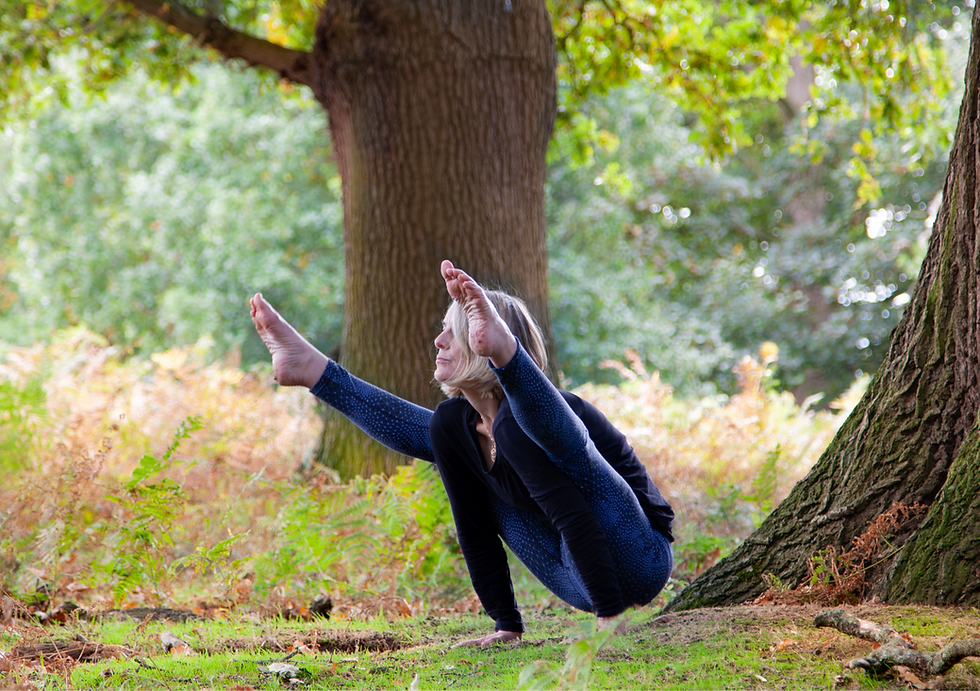Ready to Evolve with us?
- Vicki Shields

- Apr 10, 2022
- 3 min read
Updated: Jul 21, 2023
What makes Evolve Yoga Training School unique is its approach to teaching the correct and efficient management of the breath as the foundation stone of Hatha Yoga. The focus is to unlock the resistance of body and breath to affect a shift from those anxious states to more relaxed ones.
Throughout this yoga teacher training, we help you custom build a self practice, based on your body, along with the knowledge & understanding of why you are doing what you are doing. The first half of the course is purely based on your own personal practice, then during the latter half you apply this approach to sharing with others, fro am place of 'knowing' authenticity and experience.
The inspiration from our approach to Yoga Asana ( postures) comes from various methods including elements from Ashtanga Vinyasa, Iyengar and the classic Hatha texts which began with only a few postures to direct the pranic energy which was maximised through the practice of Pranayama. Alongside this we encourage a regular and focused breathwork to Pranayama practice, from which meditation can evolve. This shifts the activity of the nervous system and therefore the activity of the mind. feeling the deeper elements of Hatha Yoga to evolve as your practice depeens. Through out this year long immersion into " getting to know your self", you explore all elements of a well rounded practice including a more somatic approach to the anatomy of movement allowing you to the ability to practice all the 8 limbs defined in Patanjali’s Yoga Sutra’s.
The focus of any daily practice, which in yoga terms is called Sadhana, is a lens from which you can view your 'self', the games the mind plays and some of the negative habitual patterns that keep us bound to suffering.
The observation of self, which in the Niyamas detailed in Patanjali’s 2.1 of the Yoga Sutras is termed Svadyaya, brings our awareness to what is arising in the present moment. This is illuminated through our interactions with others, our relationships. These relationships with others test our reactions, our habitual patterns, especially with those who “press our buttons”, those who bring up fears and inner turmoil.
If we apply the Yamas and Niyamas to what is arsing in any given moment, guided by Patanjali, we can learn how to act from the heart. This can be a daily contemplation of giving thanks, of letting go of negative thoughts, a daily practice of forgiveness, and finally asking for guidance and surrendering to something greater than us. Even if we don’t fully understand or grasp this, surrendering to a creative force that created the planets and stars, the elements in nature and the entire universe, may help us.
We practice, we focus on a goal, we surrender to grace, allowing the process of yoga to happen without our interference. Essentially we get out of our own way, wherever we place our attention the energy follows. The breath is our tool to bring practice inwards, to focus on the central axis, like a string of pearls that is threaded between the floor of the pelvis and the roof of the mouth. If we focus on this thread of pearls, not missing a single one on both the inhale and the exhale, it keeps the attention concentrated and allows the mind to become still. This is the starting point from which every asana can blossom, it is the meaning behind Sthira Sukkham Asana, the definition given by Patanjali who does not go into detail of which asana to practice, but defines how the postures should be done. A comfortable place, both on a physical and psychological level from which meditation spontaneously arises.
“Everything that we have explored on the 200hrs makes total sense to me as a GP. From the physiological effects of asana and breath work, through to the psychological effects of these practices done with single pointed awareness. It cannot help but be transformative, and in these crazy times, it has helped me to find more stability and equanimity in my work-life too.”







Comments